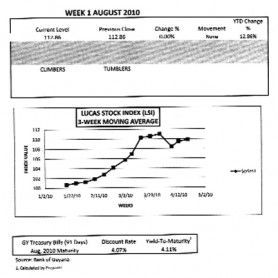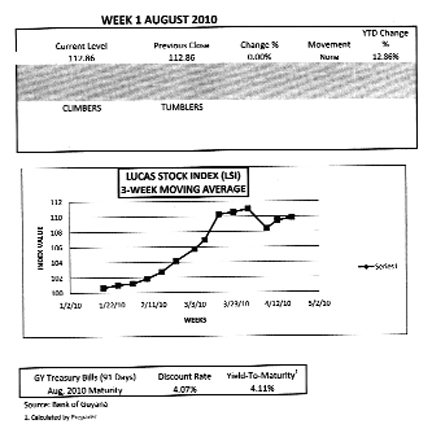By Rawle Lucas
Resource-Based Model
The people of Victoria held discussions on the economic future of their village last Thursday and Friday and heard points about the importance of education and resource use from several speakers. The resource-based model regards each organization as having a unique set of resources and capabilities which underpin its ability to generate profits. Strategic advantage is gained by the development and effective employment of resources that are internal to the organization. The emphasis on resource utilization did not focus solely on physical, human and financial resources. The need for those resources is well understood. Instead, emphasis was placed also on the body of information that exists in official documents, annual reports of private companies and in the value of the tools of technology. The discussion therefore eschewed the typical focus of the resource-based model of growth and development that is associated with private business organizations. A significant observation was that increasing the information awareness of villages meant increasing their ability to execute activities across value chains, thereby enhancing the competitiveness of Guyana.

Bank of Guyana Reports
The BOG supervises and regulates how banks and other lending institutions behave in Guyana, and in this role, influences the money supply and the amount of credit that could be made available to Guyanese by commercial banks. An important instrument in this regard is the reserve requirement. That is the minimum amount of deposits received from customers that the commercial banks have to keep on hand at all times. In its supervisory role, the BOG also fosters domestic price stability by utilizing a series of short-term and medium-term measures called open market operations that also influence the money supply. These measures are used far more frequently than the reserve requirement and are dictated by changes in the foreign exchange rate and government demand for money. The latter action results in the use of Treasury Bills which commercial banks either have to buy or redeem. By following the policy behaviour of the BOG, it is possible to determine if and when the cost of borrowing would go up.
Reports of Ministries
Another resource that should be tapped is the reports of the ministries, especially those with responsibilities for the essential sectors and activities of the economy, such as housing, clothing and feeding the country. Data on housing construction and costs are being gathered by the Central Housing and Planning Authority. This data help to identify trends in housing construction. Currently, information on housing demand is found using the mortgage data published in the report of the Guyana Bureau of Statistics. Data on garment production is also found in this report and is not readily provided directly to the public by the Ministry responsible for this industry. But, interest should be shown in the data produced for the garment manufacturing industry to forecast demand and to anticipate potential risks. The judgments formed from these assessments could then be used to determine if villagers should be encouraged to enter the industry. Another ministry of importance is that of agriculture. The Ministry of Agriculture provides plenty resources in support of various agricultural activities, in particular rice. Extension services are gotten also through the agriculture ministry for other crops production.
None of the ministries, as a general rule, provides information directly to the general public for consumption. That does not mean that the ministries should not be approached directly for the information. Indeed some of this information can be used to develop leading indicators of the economy and could tell when economic activity will contract or expand. In other words, the village could equip itself with information that helps to manage its resources effectively and provide timely advice about investment and employment opportunities for its residents. The timing of access to information means opportunity lost or opportunity gained.
Annual Reports of Private Companies
Another resource is the annual reports of private companies. Annual reports represent the current and future thoughts of a company. Motivated by a desire to justify decisions, companies reveal vital information about potential investment, market and job opportunities in these documents. For example, Demerara Distillers Limited (DDL) reported in its 2008 Annual Report that its subsidiary Tropical Orchards Company Limited (TOPCO) had trouble obtaining fresh fruits throughout the year. DDL did not make that statement just to complain, but to inform people that there was a demand for fresh fruit. Caribbean Container Inc. (CCI) indicated in its 2008 Annual Report that it recycles about 4,000 metric tons of paper waste every year and that it buys over 50 percent of it in Guyana. That is information about possible market opportunities for used boxes and cardboard. There should be interest also in the reports of the financial institutions, not only for their lending activities, but for potential job opportunities. Citizen’s Bank, for example, indicated in its 2009 Annual Report that it plans to expand its branch network in communities outside of Georgetown starting in 2010. With this kind of information, Victoria could position itself to become a location of one of the imminent branches of this or any other bank that wants to do business along the vast East Coast Demerara/West Coast Berbice corridor.
Village Initiative
The preceding narrative contains examples of how information can serve as a powerful resource for creating or finding opportunities or avoiding threats to economic and financial progress. Such information would be useless if Victoria did not have a mechanism to process and evaluate it so that good decisions could be made. The conference recognized this need and decided to set up a facility to gather, assess and manage its information needs. Victorians also need to be ready to absorb and use the information, if it would like to gain competitive advantage. This requirement calls for setting up relevant training programmes. The initiative on information gathering and dissemination has the intention of reaching across village lines since it is understood that other villages suffer from similar resource limitations.
LUCAS STOCK INDEX
In week one of August 2010, the Lucas Stock Index showed no movement in contrast to week four of July 2010, when the LSI declined by seven tenths of one percent. With the value of the Index remaining unchanged, the gain of the LSI for the year also remained unchanged at 12.86%. Notwithstanding its performance, the index remains over three times higher than the yield on the risk-free Treasuries that will mature in August 2010.





